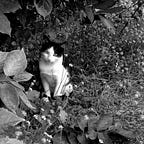In the inner chamber of Maitreya
When the Taliban blew up the Buddhas of Bamiyan in March 2001, they also destroyed many surrounding caves with statues and colourful mural paintings. One was a painting of Maitreya occupying the centre of a niche on the ceiling of cave E, above the head of a sitting Buddha. Thanks to a group of Japanese researchers who documented the Bamiyan site since the late 1950s, it is reinstated with the latest digital technology and exhibited in Tokyo.¹
In this painting, the Maitreya sits cross-legged, forming a vitarkamudrā with his right hand transmitting teachings to the pilgrims. Although the hair knot on top of his head is missing compared to a sketch by Captain P. J. Maitland in 1886,² the way his hair dropping down to the shoulders and the water flask held in his left hand are both symbols of ascetic renouncement which originated in the representation of Brāhman in the Vedic religion and specific identifiers of Maitreya in Gandharan iconography.³ Besides an aura and the clothes painted in light ochre, the most prominent feature is the bright blue background, jewellery and drapery wrapping around the upper body painted in lapis lazuli, as if the body merges with the sky. Hence the mural is named the Blue Maitreya by the archaeologists. The colour of lapis lazuli used in Bamiyan was so brilliant that even Robert Byron, who in his visit in 1934 was sickened by the “monstrous, flaccid bulk” and displeased by the “frightful semi-Hellenistic image from India or China”, was impressed by the “bright harebell blue”.⁴
According to Chinese sutras, two of them translated by the 3rd-century CE monk Dharmarakṣa and the 5th-century CE translator of Xiongnu-descent Juqu Jingsheng, Maitreya will be reborn again and attain Buddhahood 5.67 billion years after Gautama Buddha’s parinirvāna. He is currently in the state of eka-jāti-pratibaddha, a Bodhisattva in his penultimate life and resides in the inner chamber of the Tuṣita heaven. For this mural painting, the artist must have imagined the inner chamber as a palace with Corinthian columns and Persian ribbons flying and undulating in the air on both sides of Maitreya. A synthesis of various aesthetic elements emerged from the depth of mind of the devotees.
How does the inner chamber of Tuṣita look like? The late Chinese Zen master Xuyun might have had an answer.⁵ During the Great Purge in China in February 1952, he and more than a hundred monks and nuns were incarcerated in the Yunmen Monastery in Guangdong by the communist mobs. One monk was beaten to death, and others with their arms broken. The bands took master Xuyun as their primary target, threw him into a sealed room, ruthlessly struck him with wooden sticks and iron bars, and treaded him with leather boots. Despite bleeding heavily with broken ribs, master Xuyun remained seated and entered the state of samadhi. It was in this deep meditative state that his consciousness was suddenly transposed into the inner chamber of Tuṣita, a place “surpassed in beauty and majesty all that we have on earth”. Maitreya was sitting on a throne, teaching meditation on stilling the mind. When Maitreya saw him, he stopped and told him to go back, for master Xuyun’s “karmic link with the world has not ended yet”.
The real gold and silver the mobs desperately looked for were not in the Monastery, nor could the Taliban soldiers found any buried inside the caves or Buddhas of Bamiyan. Perhaps they were beyond reach, well protected by Maitreya. Master Xuyun now must have enjoyed his reunion with Maitreya in his inner chamber into which, like an encircling and spheric cartouche, only the holiest enter and remain.
- http://mirokuten.com
- M. G. Talbot, P. J. Maitland and W. Simpson, ‘The Rock-Cut Caves and Statues of Bamian’, The Journal of the Royal Asiatic Society, 1886, 18: 323–50.
- A. Miyaji, ‘Iconography of the Two Flanking Bodhisattvas in the Buddhist Triads from Gandhāra: Bodhisattvas Siddhārtha, Maitreya and Avalokiteśvara’, East and West, 2008, 58(1/4): 123–56.
- Robert Byron. The Road to Oxiana, The Folio Society, London, 2000.
- Xu Yun. Empty Cloud: The Autobiography of the Chinese Zen Master Xu Yun, translated by Charles Luk, revised and edited by Richard Hunn, Element Books, 1988. For historical background, see Frank Dikötter. “The Purge.” The Tragedy of Liberation: A History of the Chinese Revolution 1945–1957, Bloomsbury, London, 2017.
